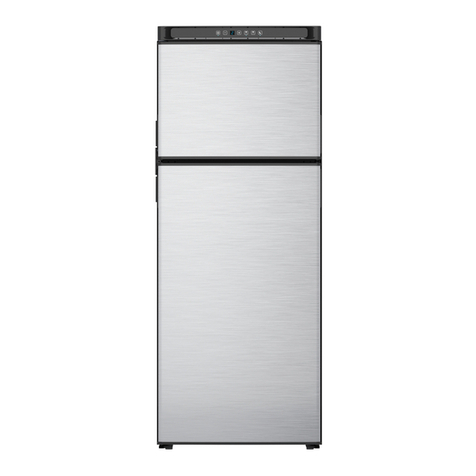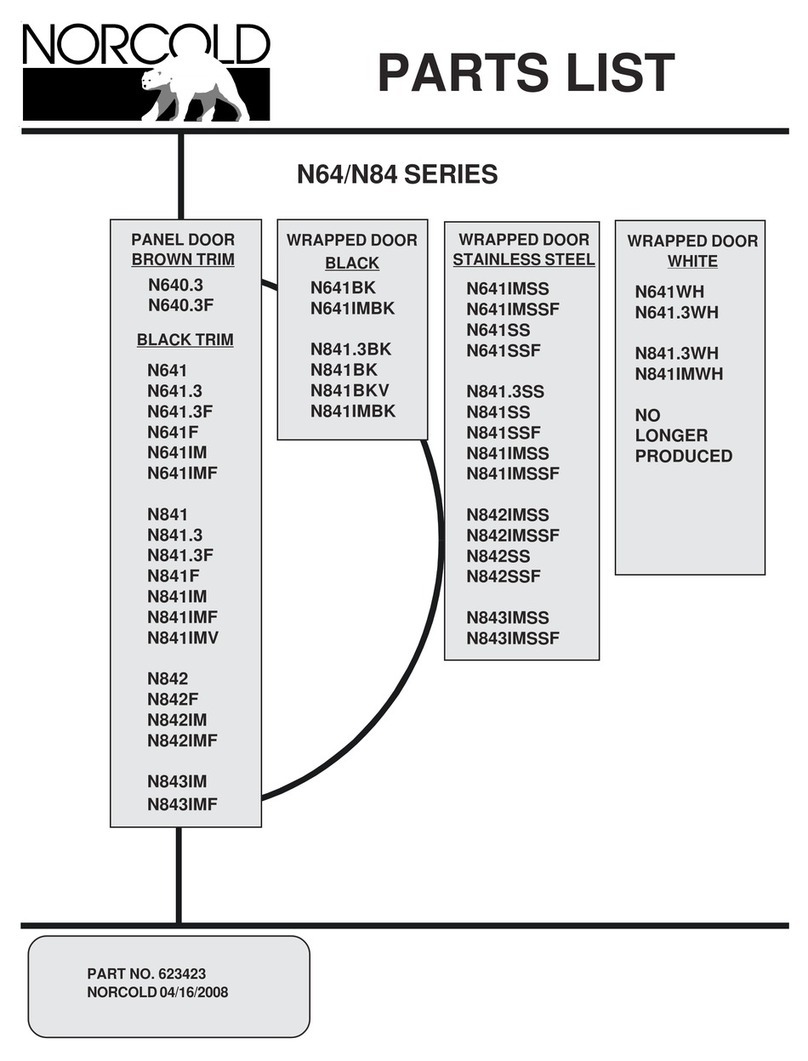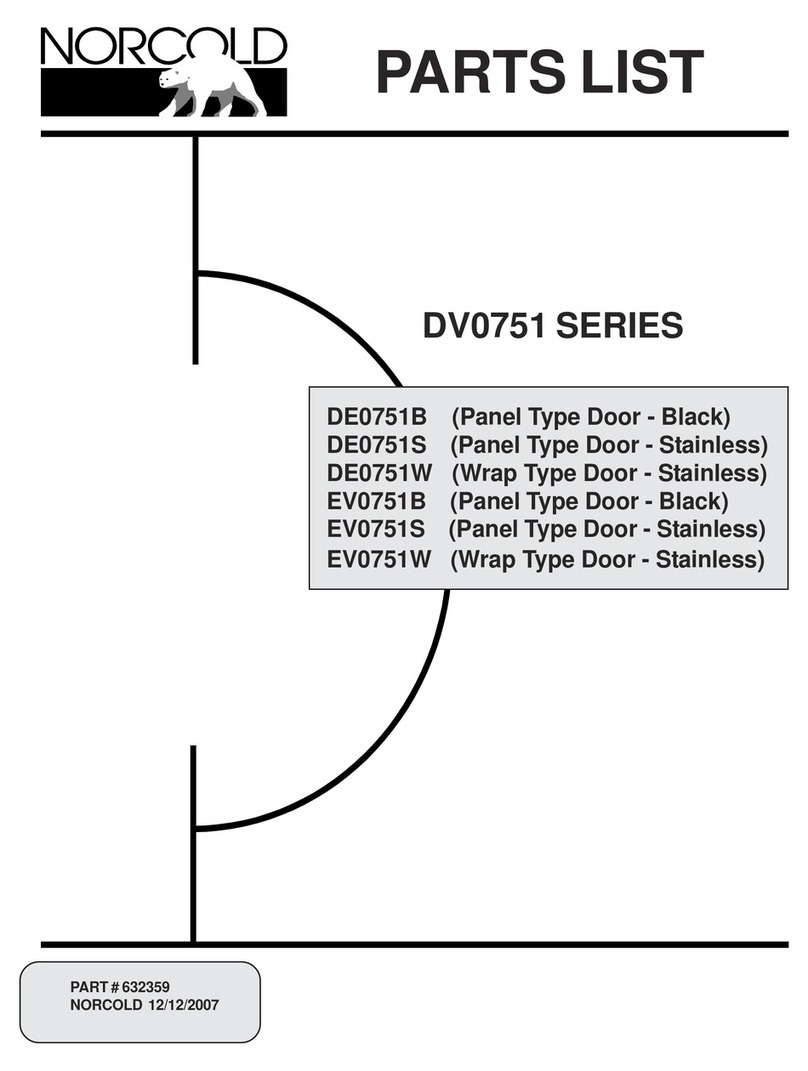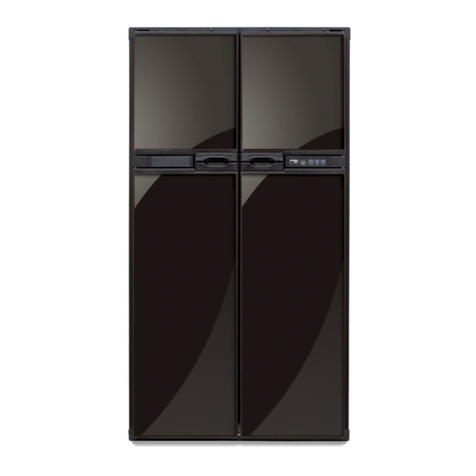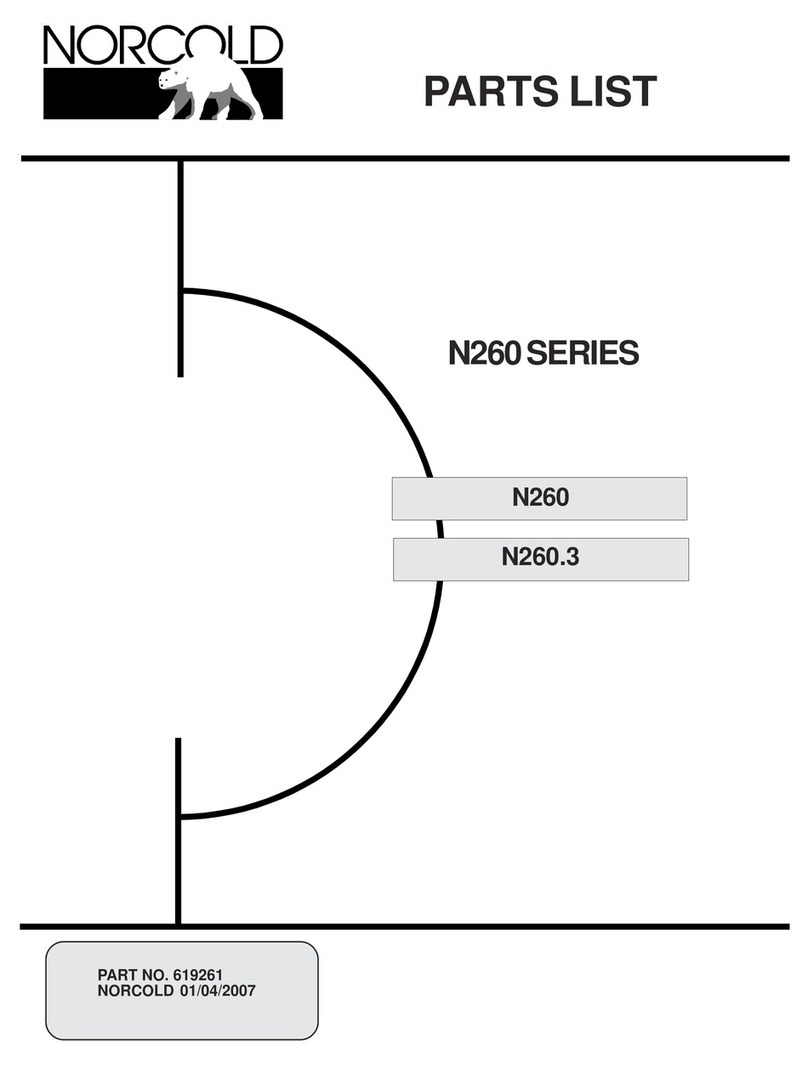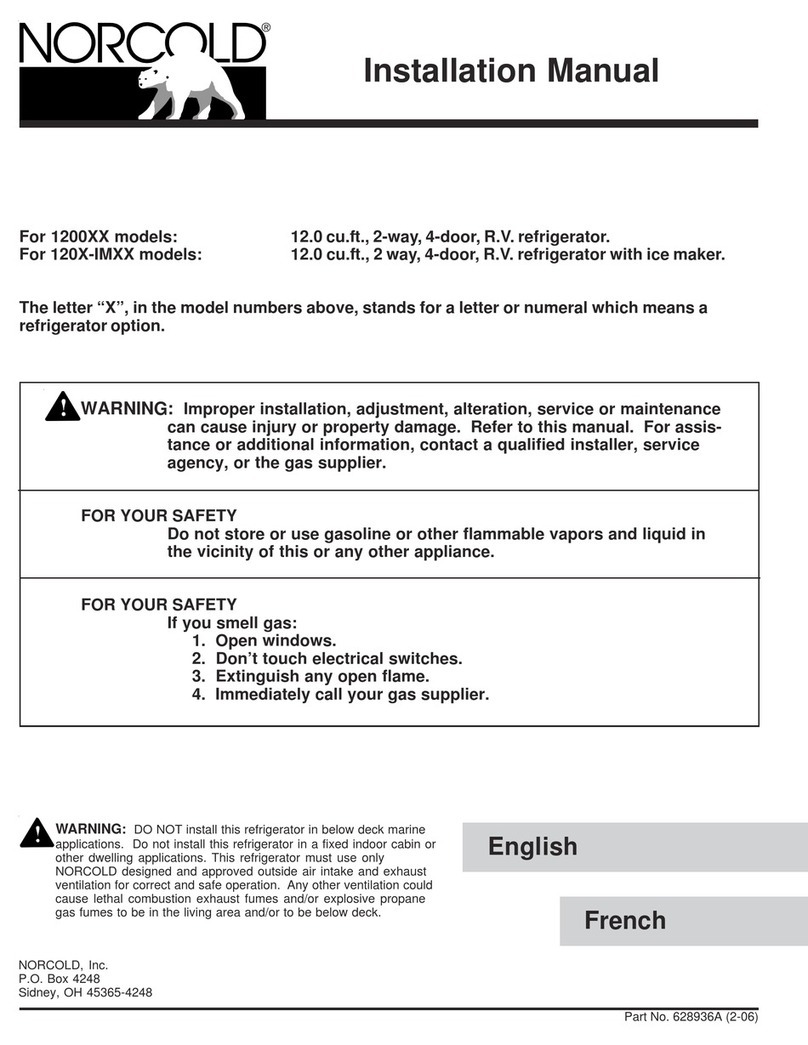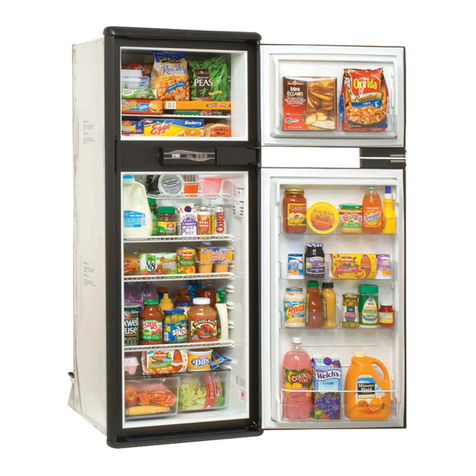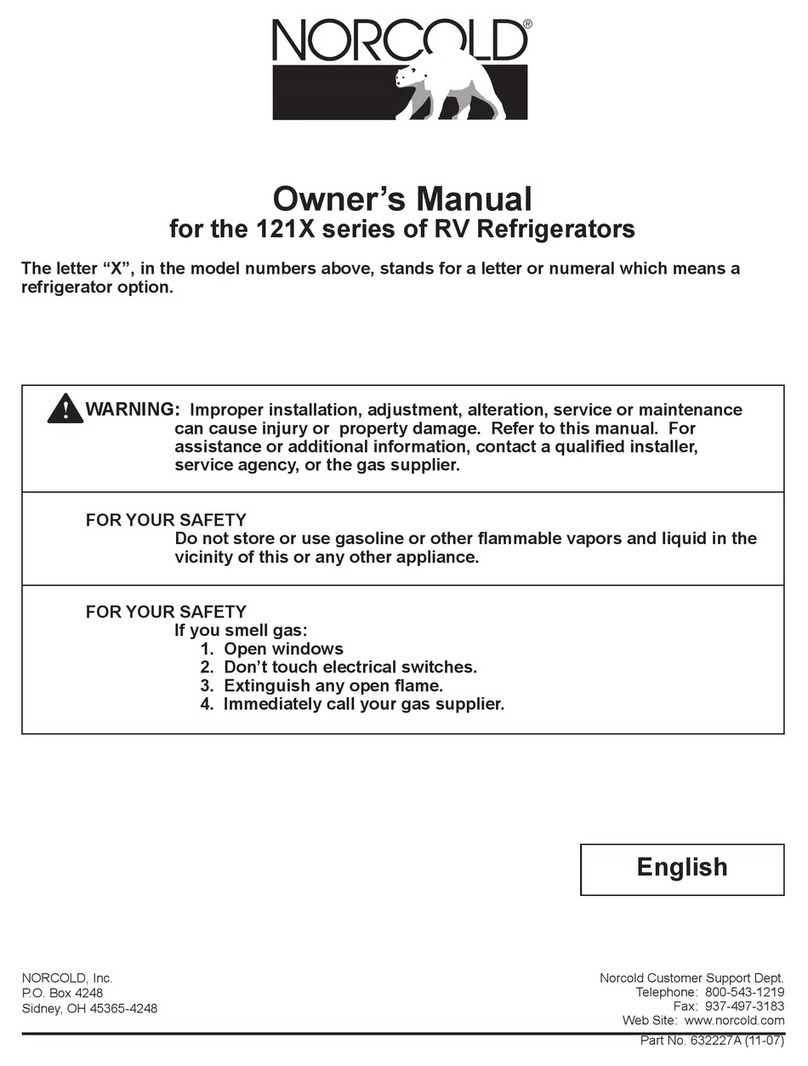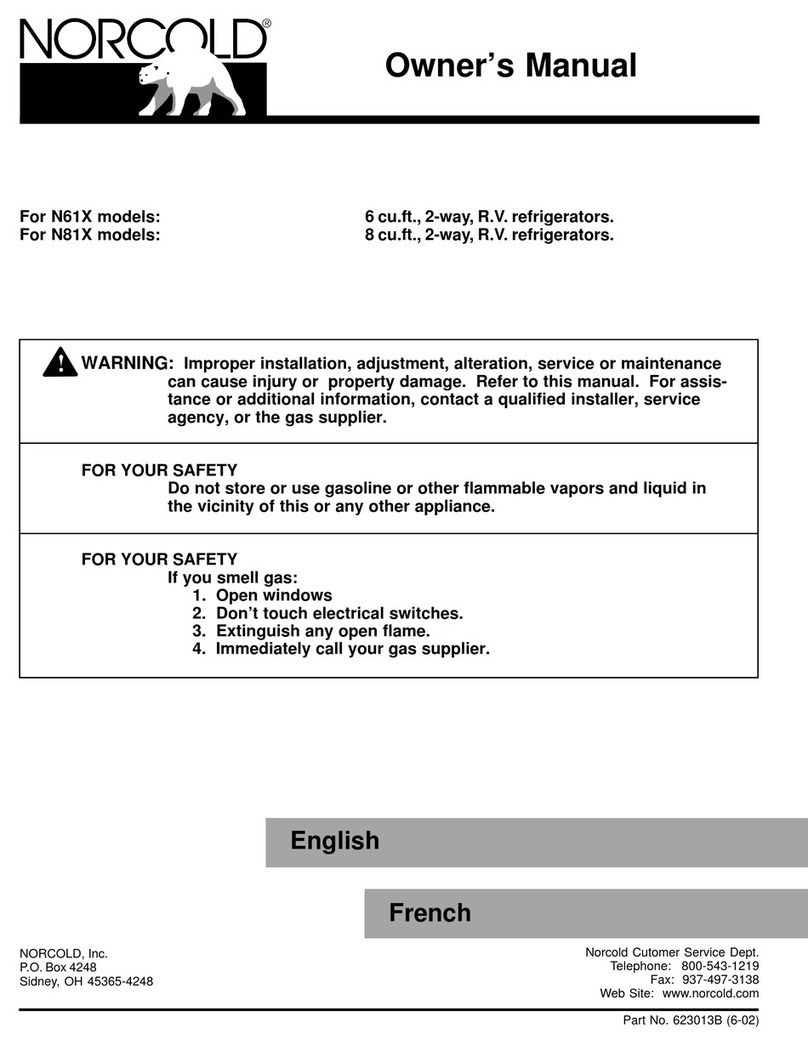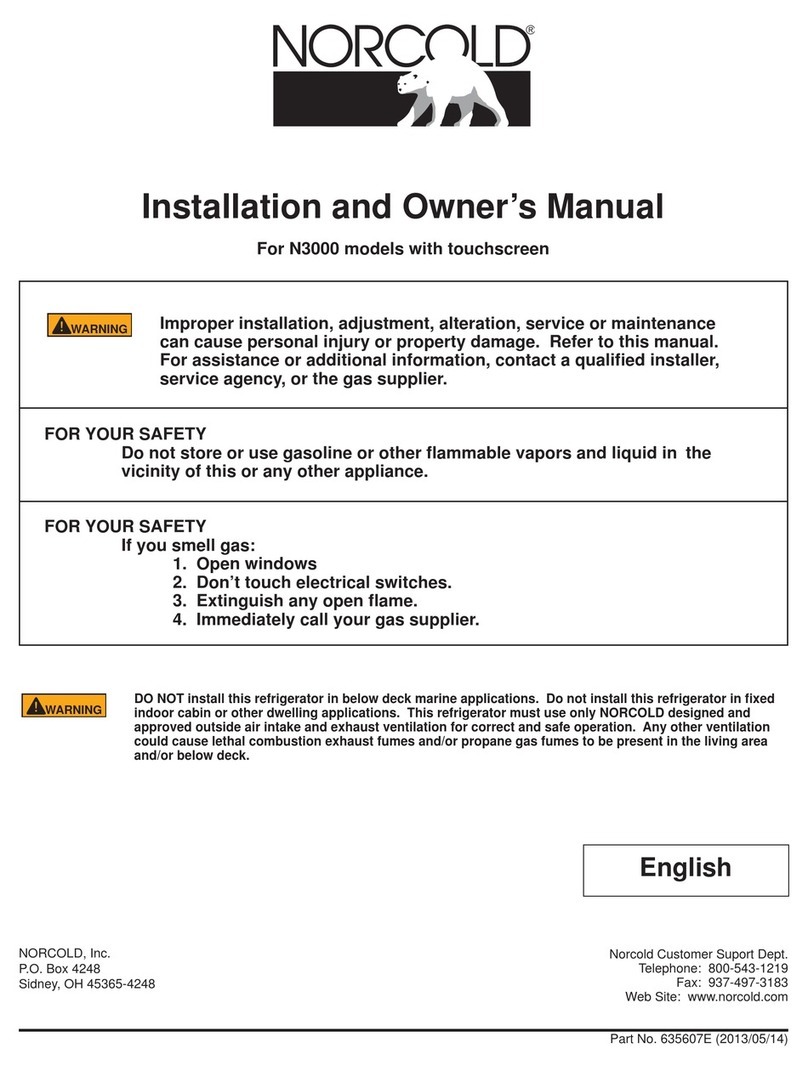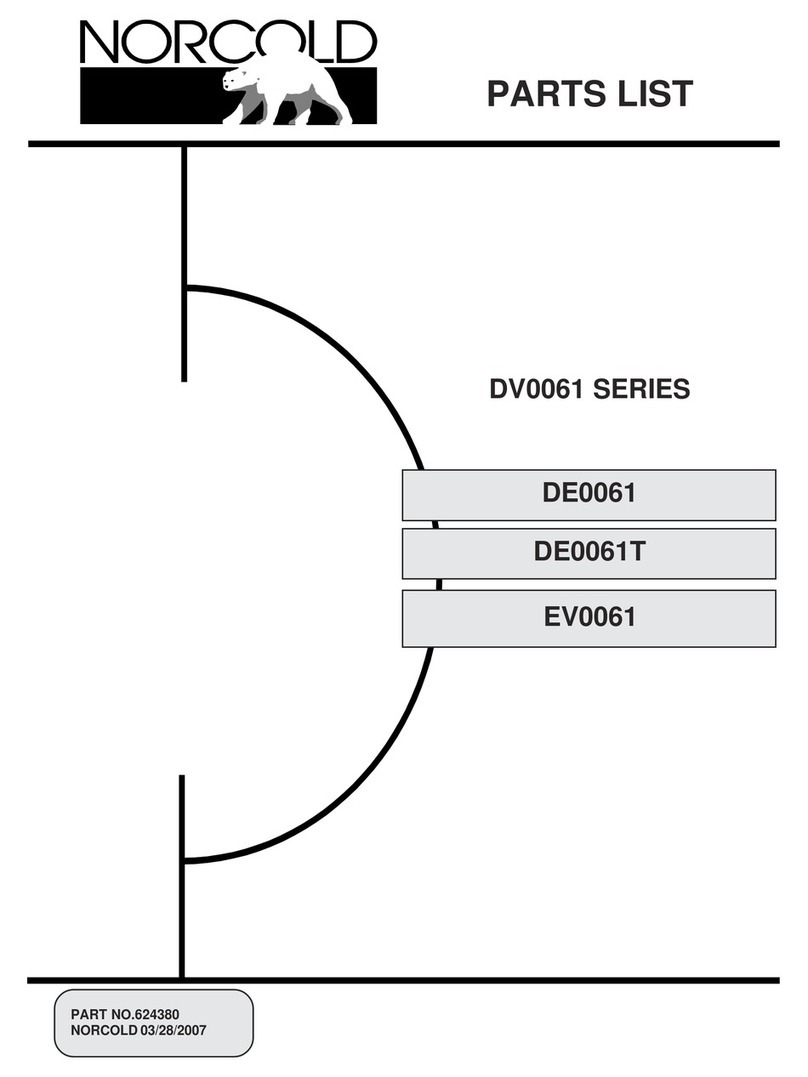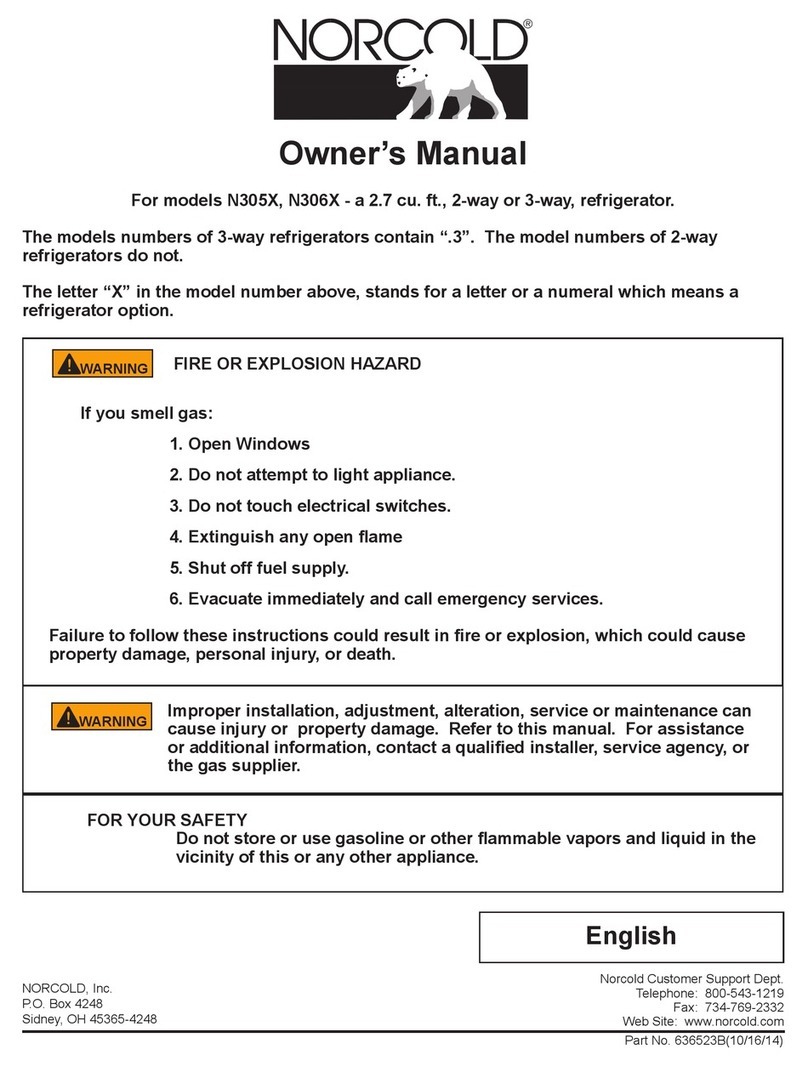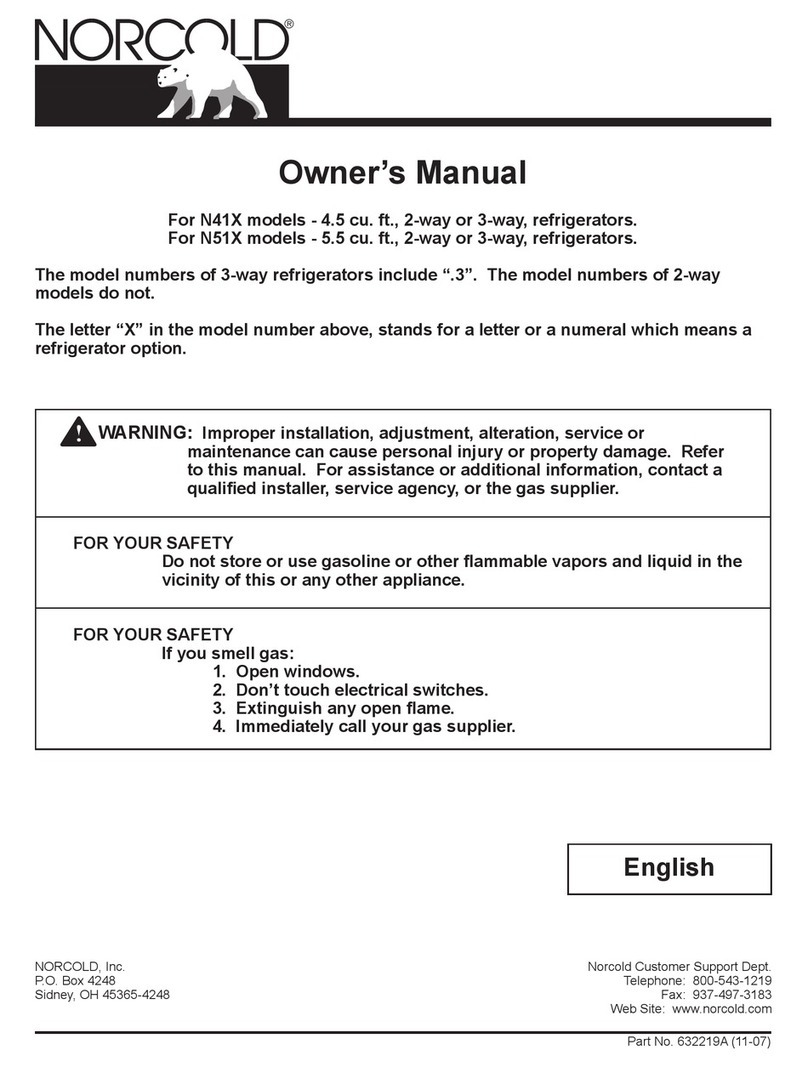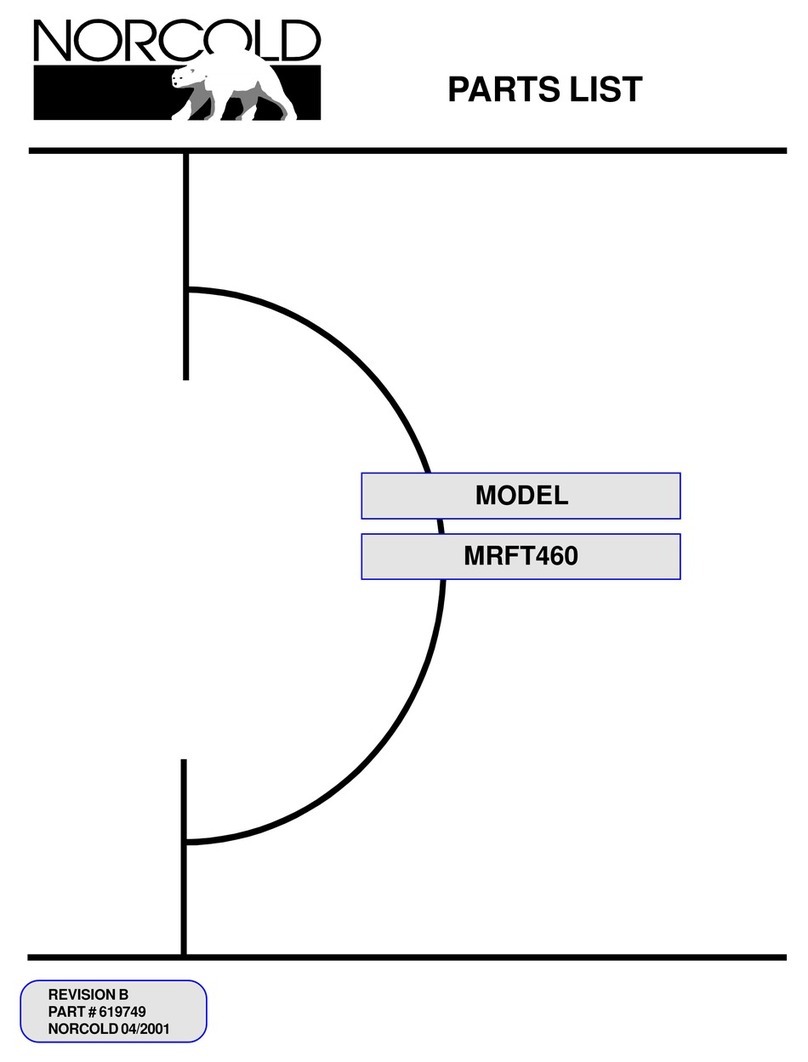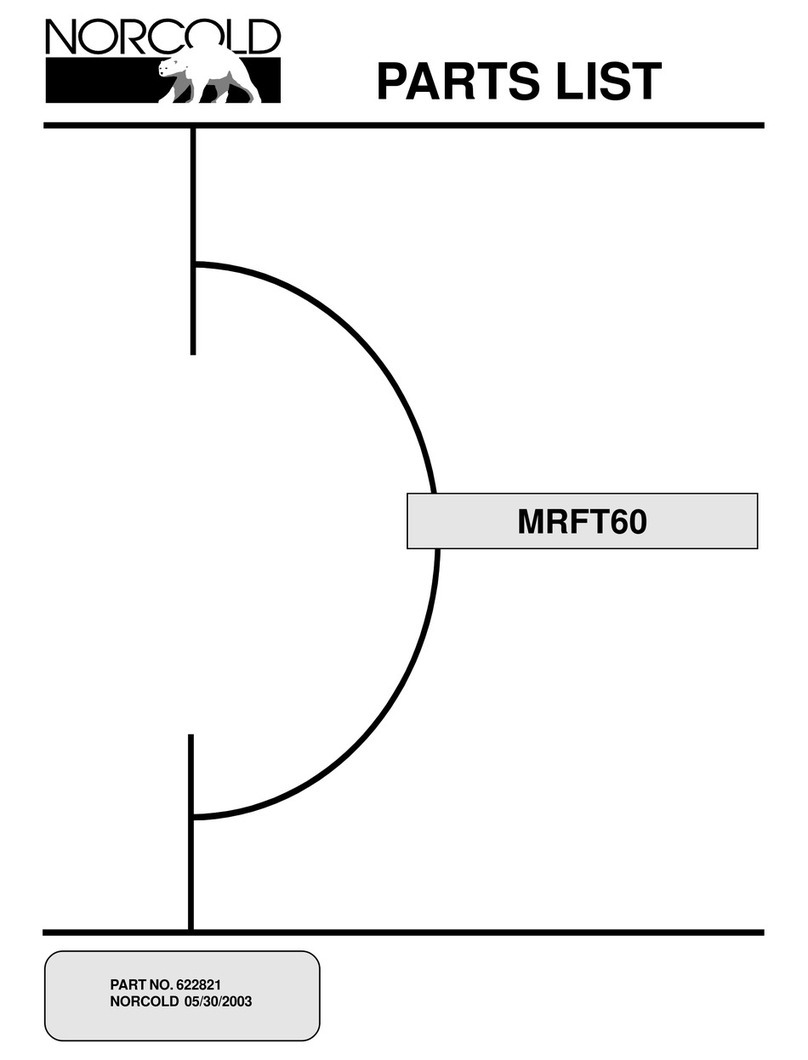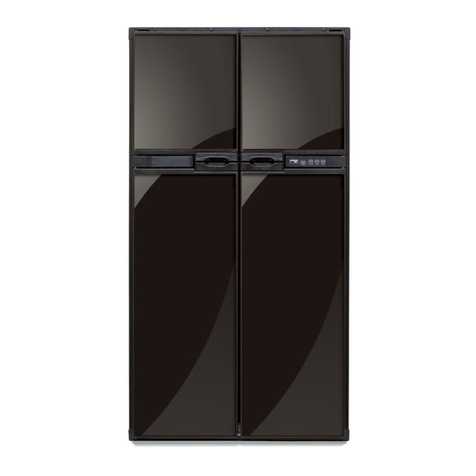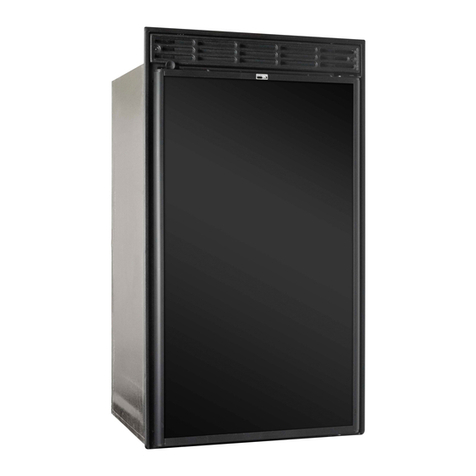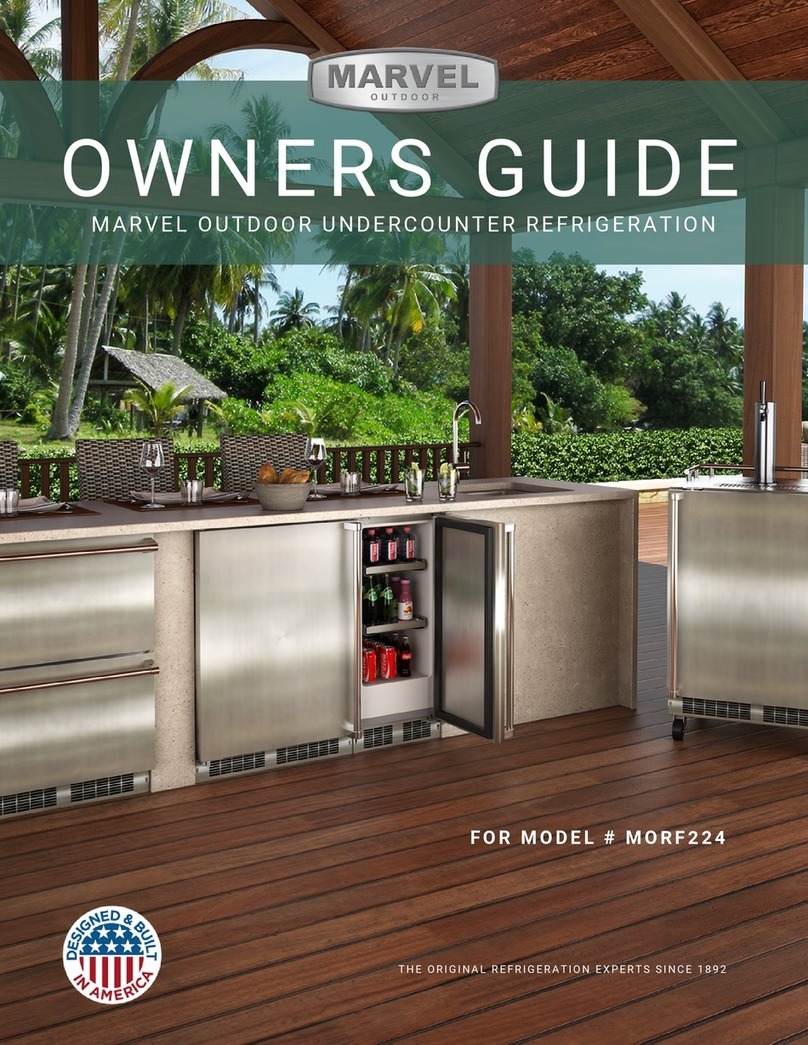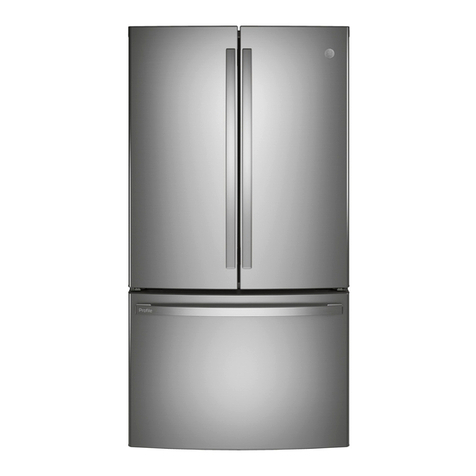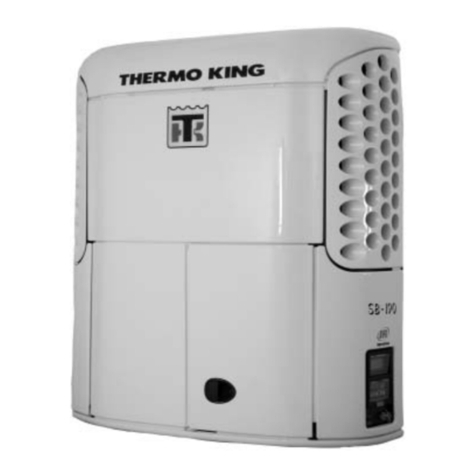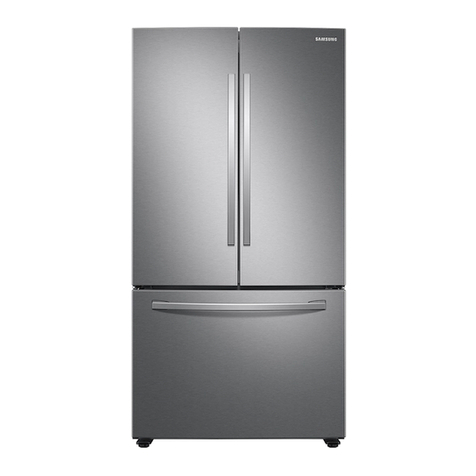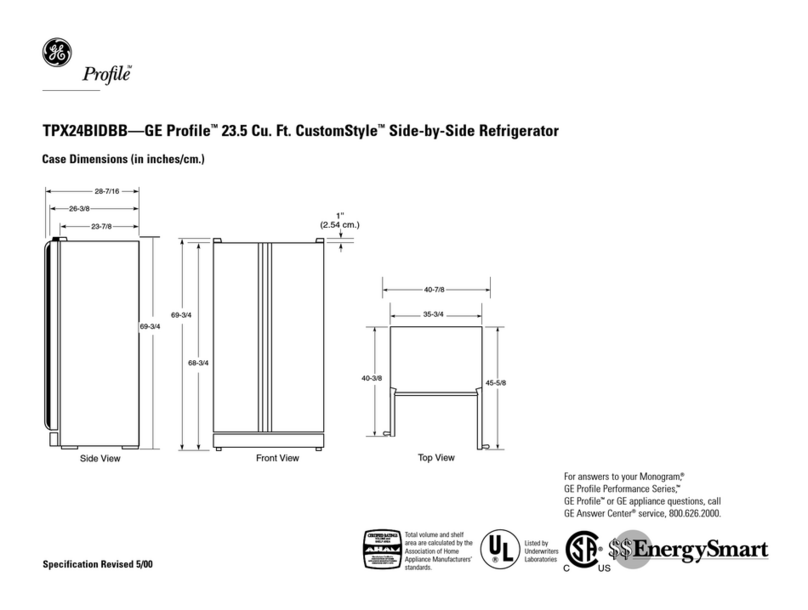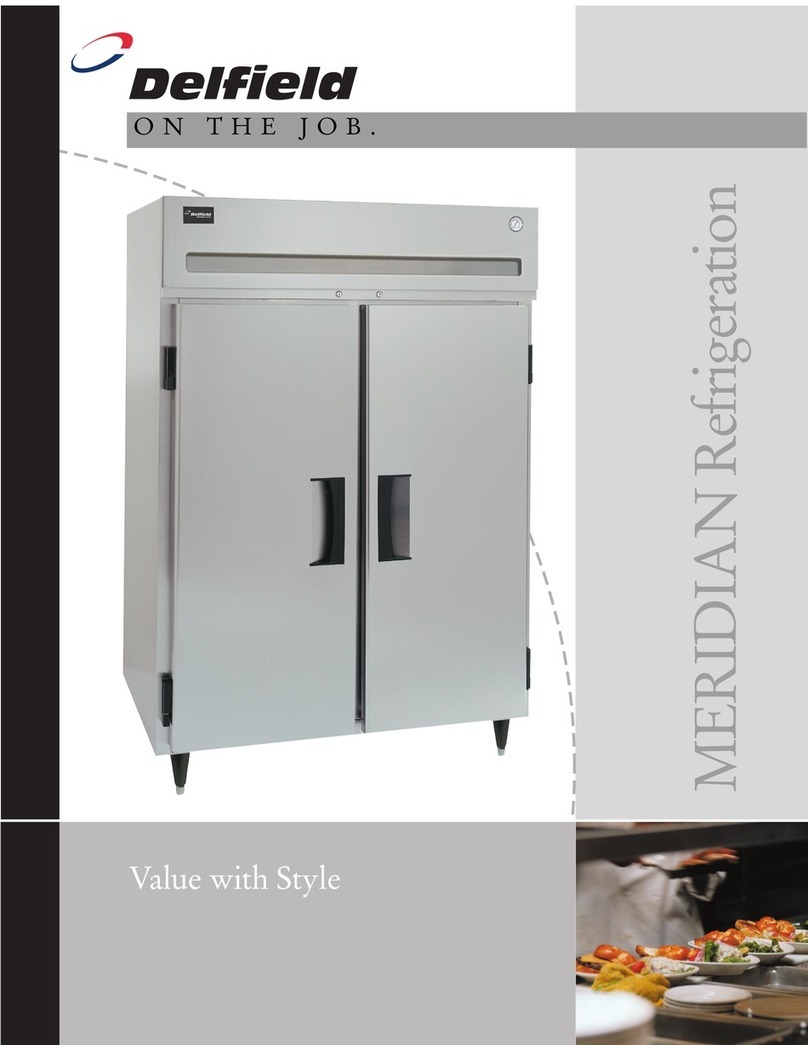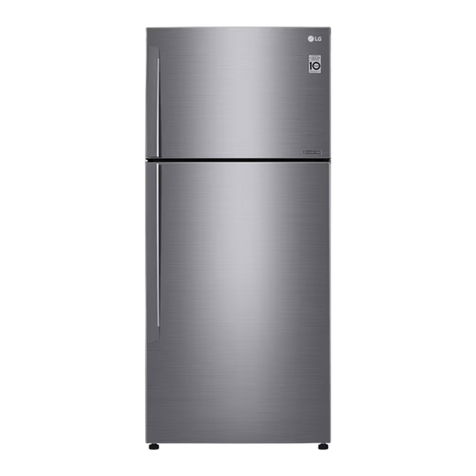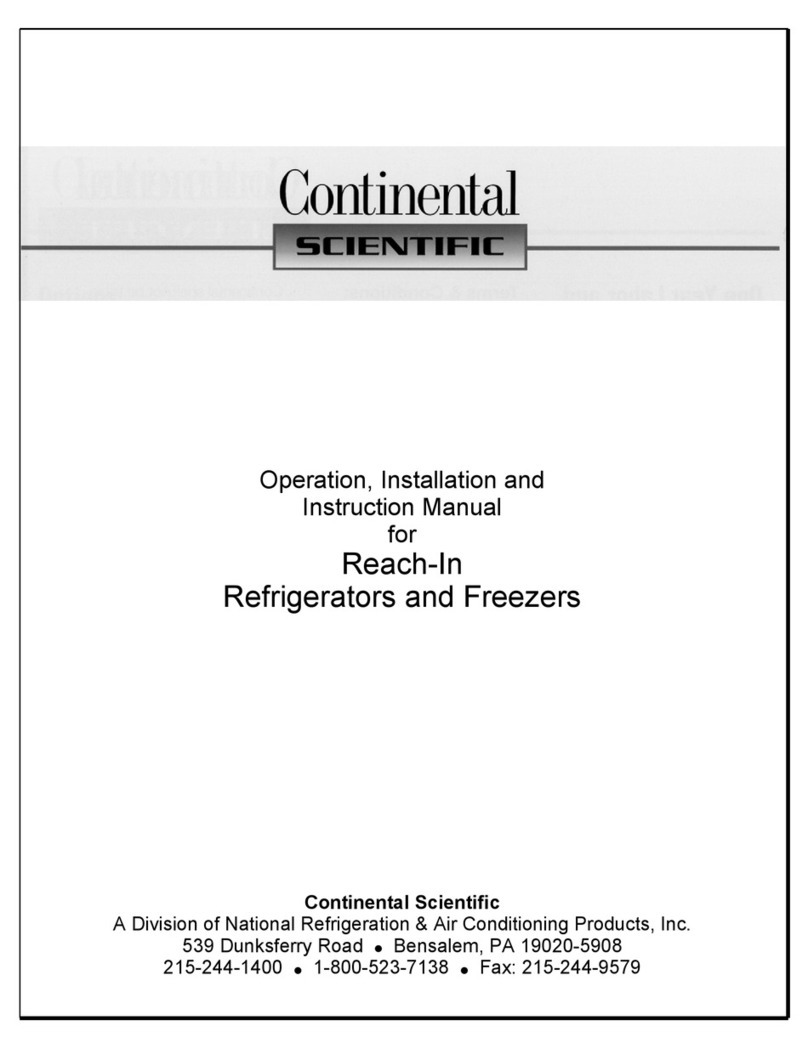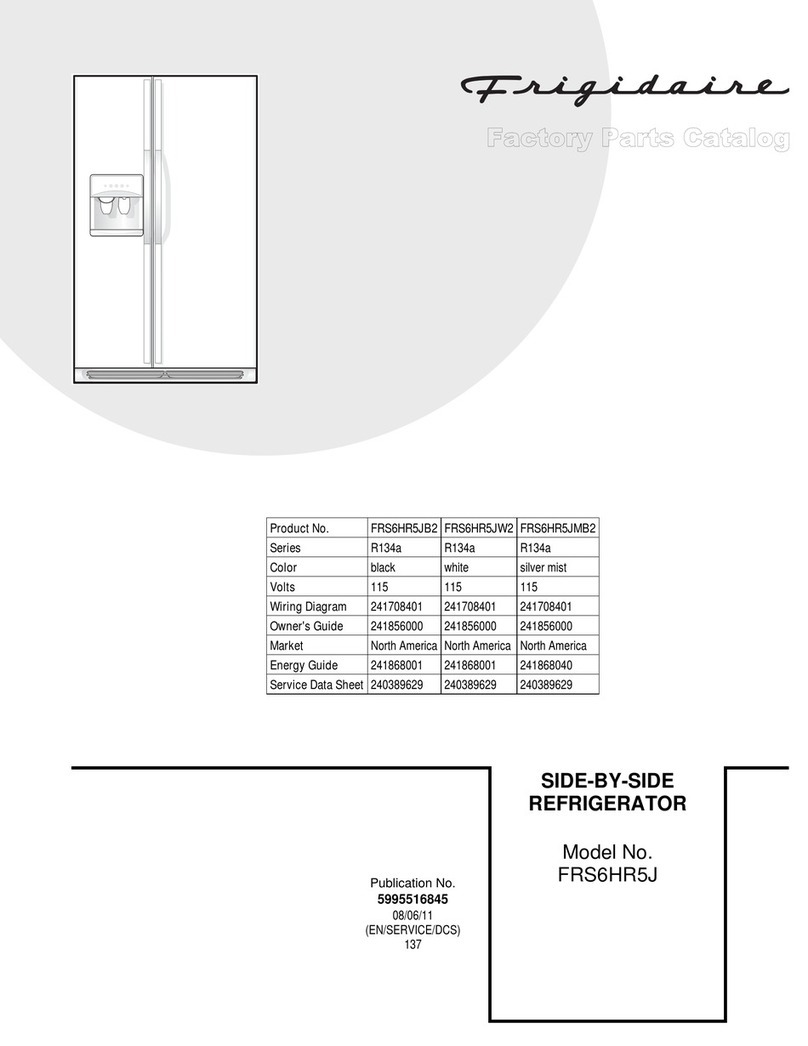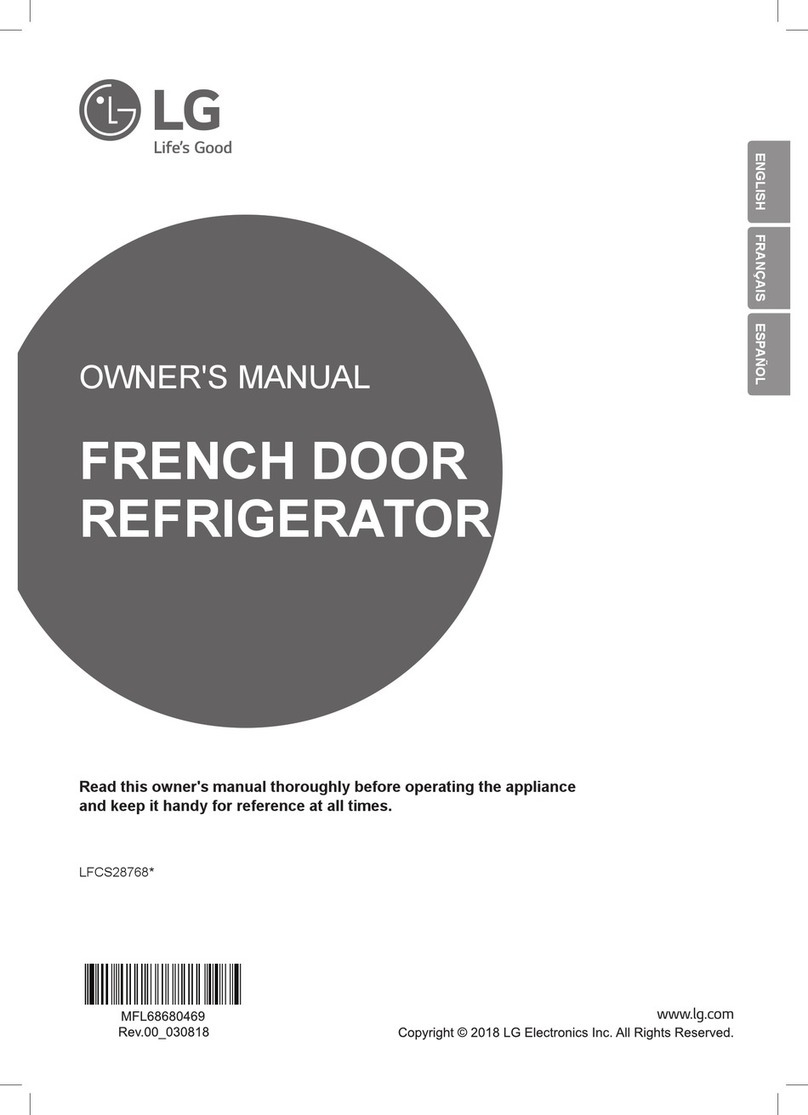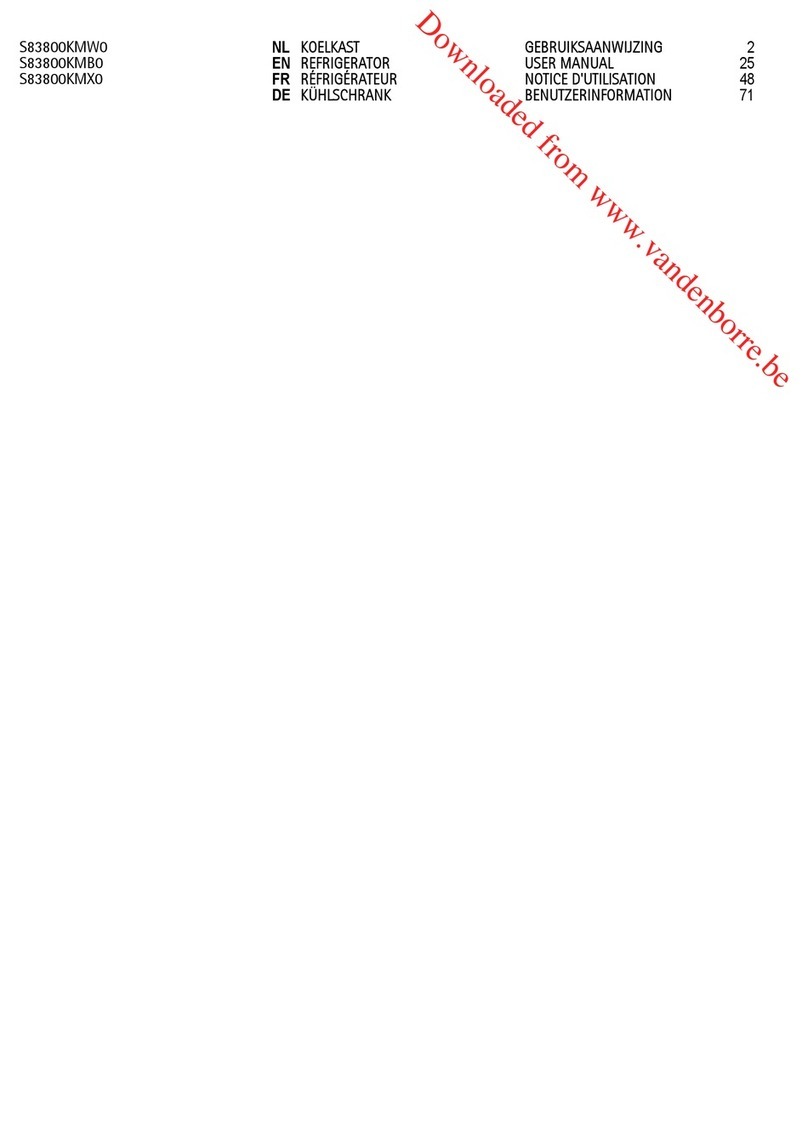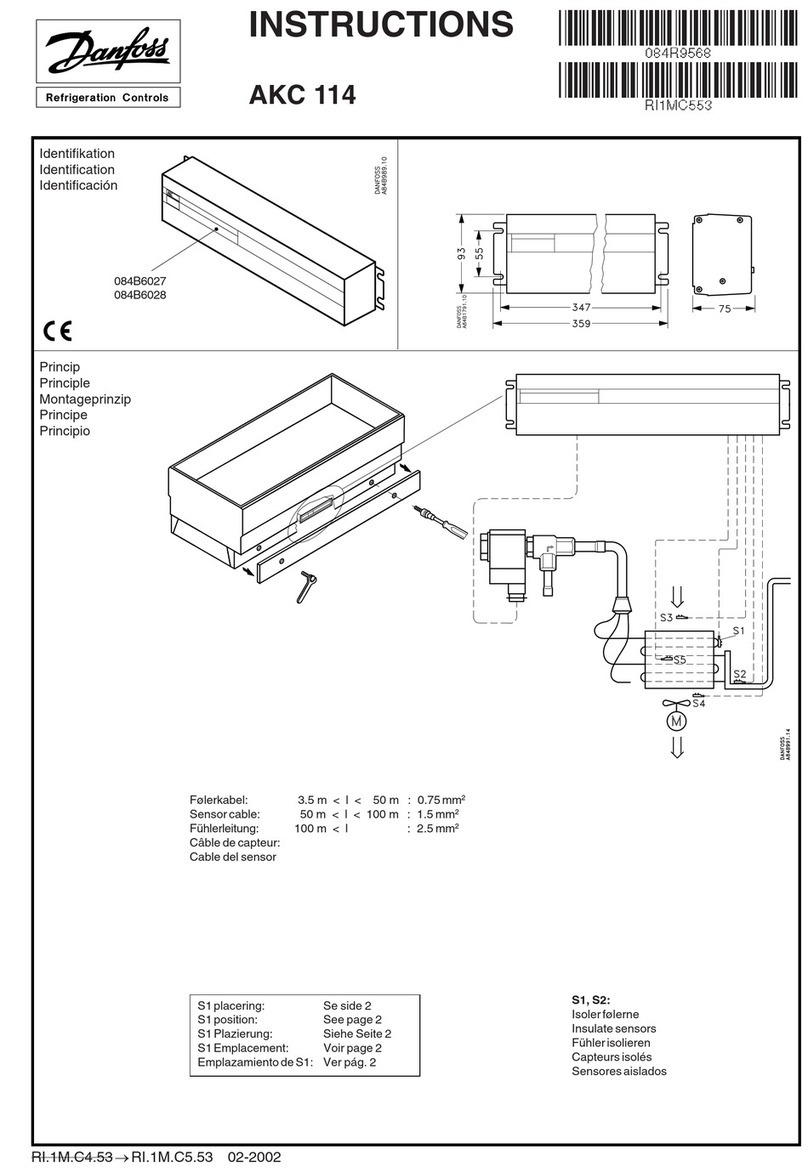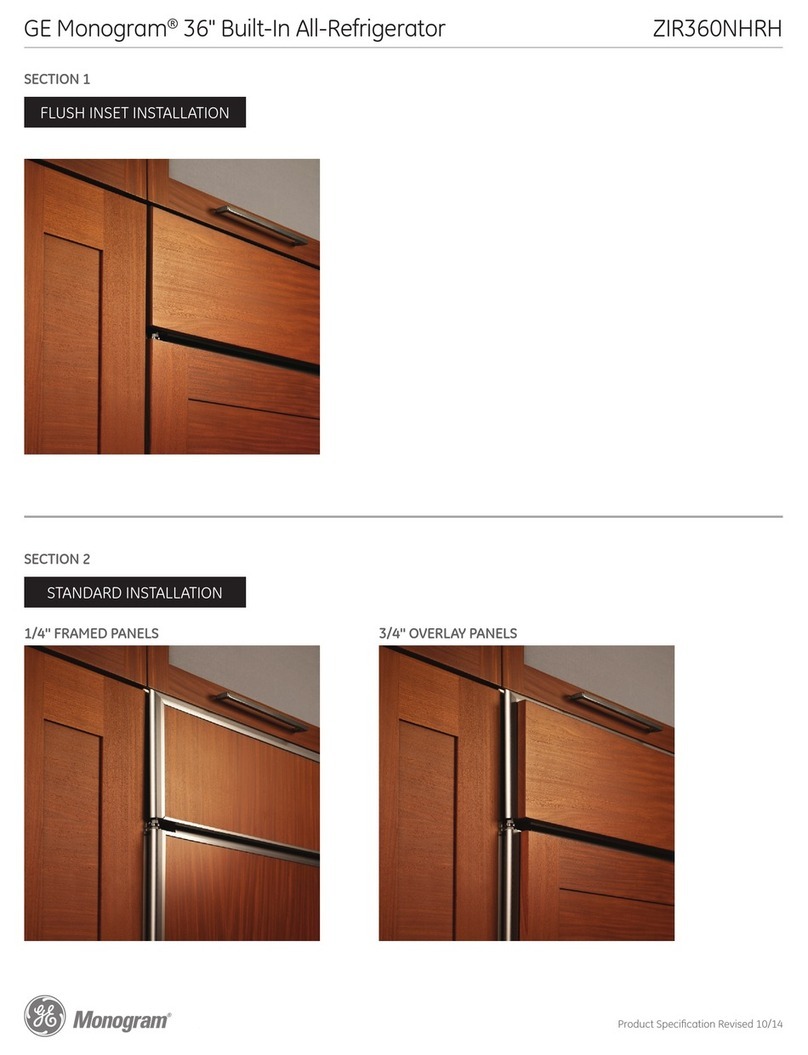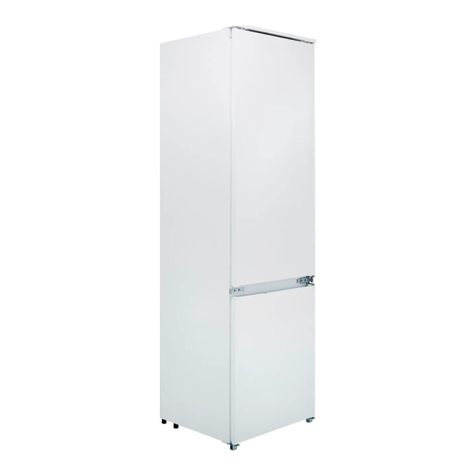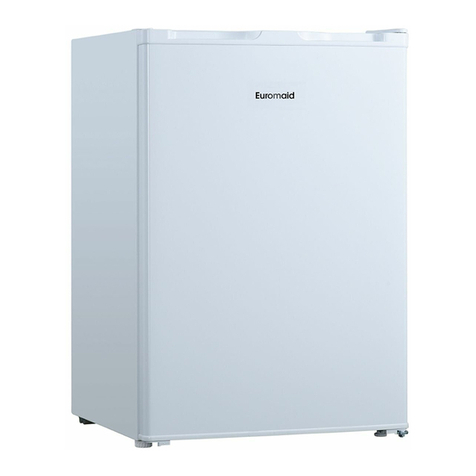
3
Safety Awareness
Readthis manual carefullyandunderstandthe contentsbeforeyouinstallthe refrigerator.
Beaware of possible safety hazards whenyouseethe safetyalert symbol on the refrigerator
andinthismanual. Asignalword follows the safety alert symbol and identifies the danger of the
hazard. Carefully read thedescriptionsofthesesignalwordstofully know their meanings. They
areforyour safety.
WARNING: Thissignalwordmeans a hazard, which if ignored, can causedangerous
personalinjury, death, or muchpropertydamage.
CAUTION: Thissignalwordmeansahazard,whichifignored,cancausesmall
personalinjury or muchpropertydamage.
Model No. and Serial No.
Themodel and serial number are on a labelwhichisonthecompressor cover near the
portablehandleandon the coverofthismanual.
General
Therefrigerator should be placed on a level and solidsurface. Thecompressorhasshock
mountsto allowtherefrigeratoroperation during transit.
Besuretherefrigeratorisnotin direct sunlight or near a gas stove, a heater,orotherheat-
generatingappliances. Avoidplacingyourrefrigerator in an areawhereitcould be acciden-
tallysplashed or sprayed with water whichcouldentertheelectrical compartmentof the
refrigerator.
Your refrigerator was thoroughlycleanedbeforeshipment from the factory. Itis advisable,
however,to clean the interior once more before using. Wipe the interior with a cloth and
warmwater. Then wipe with a dry cloth.
Operation
Thisrefrigeratoroperatesoneither 120 volts (60 hertz)ACcurrent from a standardwall
receptacleor12/24 voltsDC currentfroma battery in your car,boat,trailer, camper, etc. If both
powersupplies are available, the refrigerator will select andoperateon ACvoltage. Ifthe AC
powerbecomes unavailable,therefrigerator will switchoperationto DCvoltage.
CAUTION: Neverstore combustible materials near the refrigerator. Storingcombus-
tiblematerials near therefrigeratorcreatesa safety hazardandalso decreases the
ventilationof thecoolingsystemwhich decreases therefrigeratorperformance.
Donot touch the evaporator or other metalpartsinside the refrigeratorcabinetwithwet
handsbecause they can freezetotherefrigerator.
Alwaysdisconnect all power sourcesfromtherefrigerator when doingroutinemainte-
nance.Have service workdoneonlyby a qualifiedservicetechnician.










